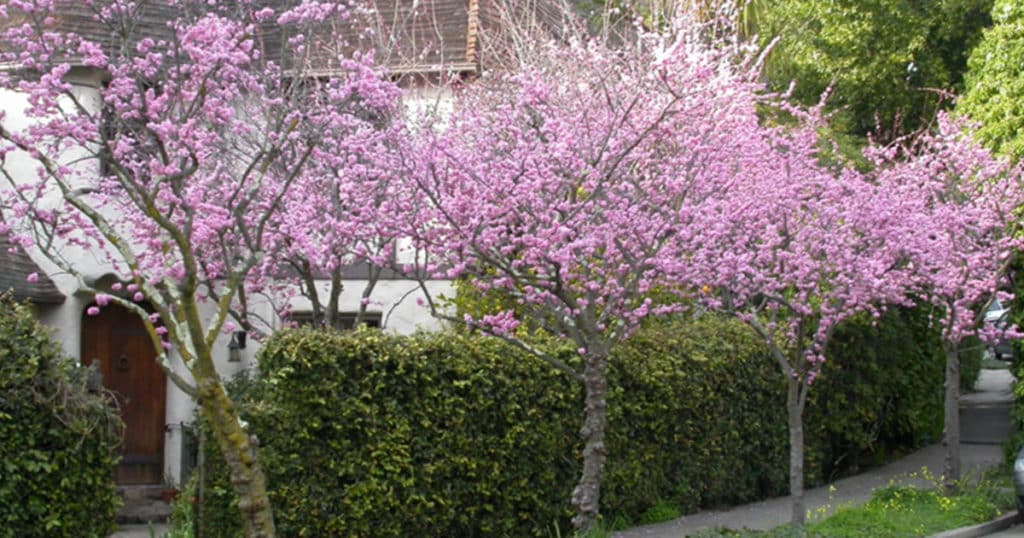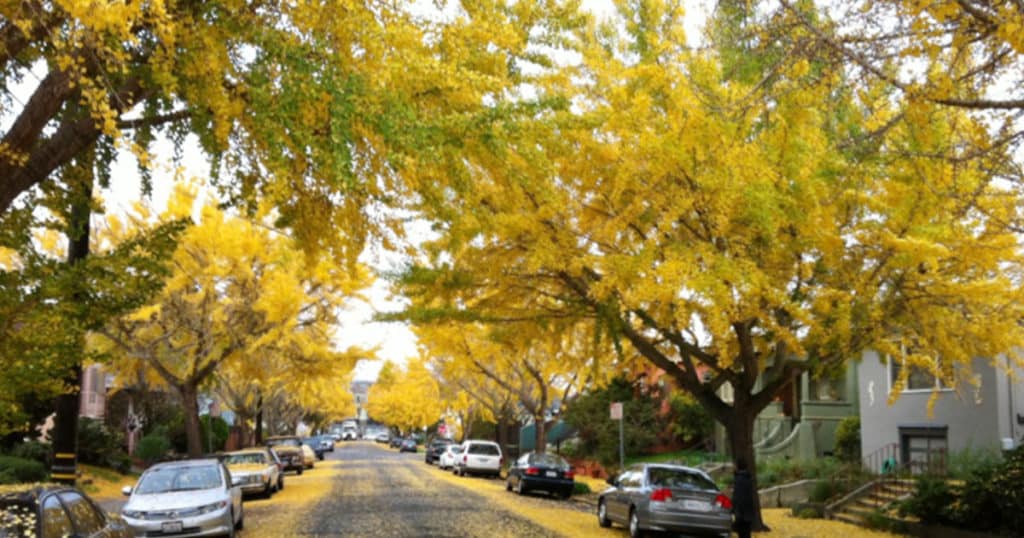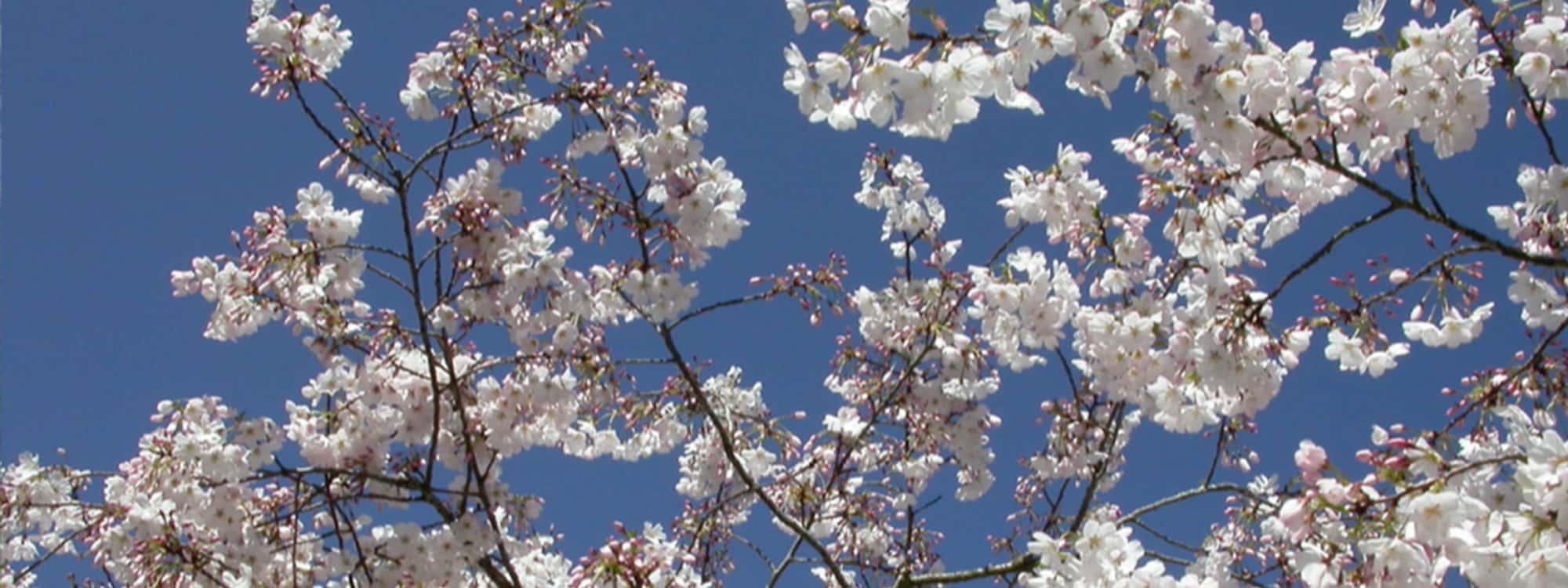Guest Post by Board member Bob Johnson
In this period when it is more difficult to get to the Bay Area’s open spaces, people are focusing more on taking walks and other outings in their own neighborhoods. I find this is not boring because of the changes that occur with the trees and gardens as the weeks go by. Our relatively mild climate means that winter is often just an overlay between autumn and spring. In January we start seeing the camellias and deciduous magnolias put out their pinks, reds, purples, and whites. Then in February, there are pink and white ornamental plum trees, followed in March by pink crabapple blossoms and then the glorious Japanese cherry blossoms. The native ceanothus can reach almost tree size and has a long spring blooming period with sprays of white and blue flowers.

Early summer brings native white flowering buckeyes as well as the related pink horse chestnuts. Evergreen magnolias set off their big white blooms against the shiny dark green leaves and purple flowering jacarandas line some streets. Paperbark trees (melaleuca linariifolia) have crowns covered with sprays of tiny white flowers that make them look like broccoli dipped in cream. Autumn then provides the colors of Japanese maple, persimmon, golden ginkgo, native big leaf maple, and sweetgum (liquidambar)—the latter can hang on sometimes until December. And these are just some of the tree species found in the region’s urban spaces. There are also, of course, flowering shrubs, bulbs and other colorful flowers, succulents, etc. to look out for.

Watching the changes that happen from week to week can make walking, jogging, and bicycling around the local neighborhood pleasurable and refreshing.





